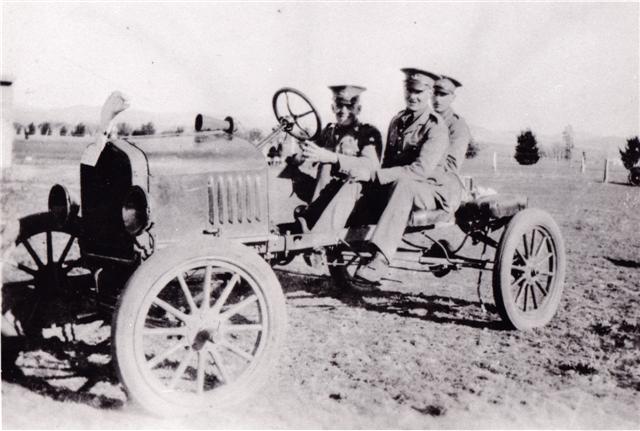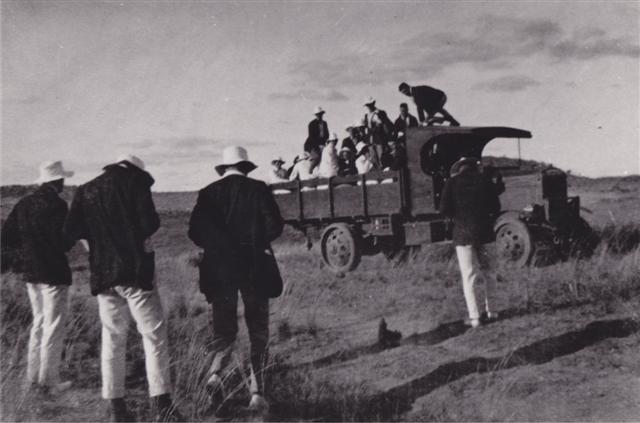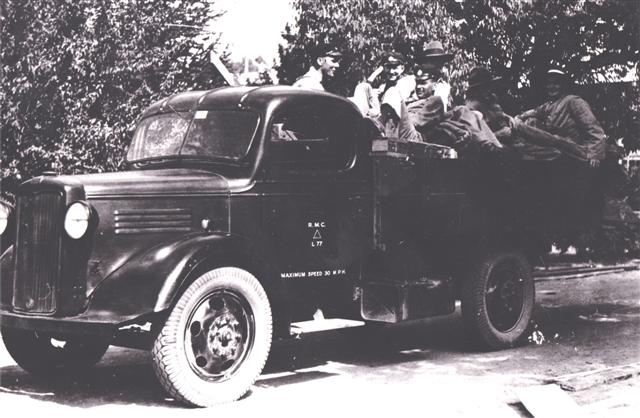Transport at RMC



Bitza in its first version
RMC 1927-8
Three cadets with a mechanical bent, Staff Cadets Heffernan, Veron and Carr (none destined to go to AASC), took mechanical training as an elective subject and, with assorted offcasts from the workshop, assembled a workable vehicle which was paraded regularly at sporting events.
At this same time it became necessary to send an officer and warrant officer to the UK for training as MT instructors for the AASC School, where annual courses were conducted for the Permanent Army. But this type of training did not permeate to the training ground for the future instructors of the Army.
Royal Military College Archives
Thornycroft solid tyred truck
RMC 1916
Purchased by the College in 1916, in concert with the widespread acquisition of motor vehicles in Australia during the early wartime relaxation of financial control, it proved a boon for the isolated establishment.
However this imaginative action neither heralded an automotive dawn for the Army nor a turn to mechanical training for its future leaders. The horse remained dominant for another twenty five years.
Royal Military College Archives
Transport Section
RMC 1938
RMC was unique in provision of motor transport, receiving both vehicles and a Permanent transport section at a time when only two military districts were so favoured, but it was for administrative purposes, not mechanical or tactical training.
The ideal of motor transport during the 1930s was centred on the 30 cwt truck. The original 1916 purchase of a 3 tonner was a more realistic acceptance of the role of the truck, but the doctrine of the pre-World War 2 era favoured light, low output vehicles, in a mental hangover of equivalence to the GS wagon.
Royal Military College Archives
Transport at RMC


